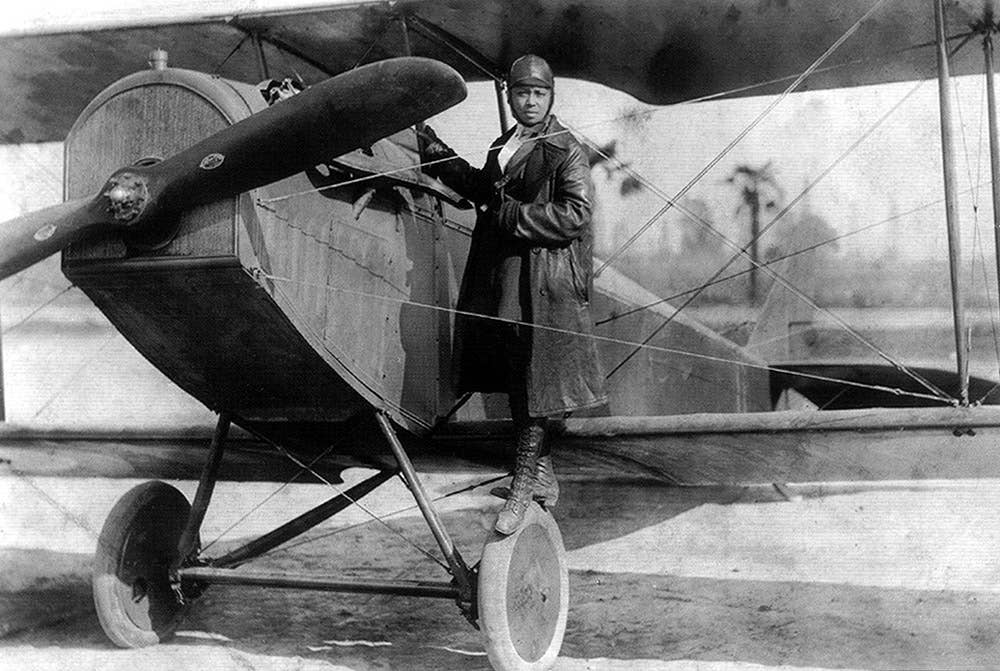
Pioneering aviator Bessie Coleman in 1922. Wikimedia Commons
When Bessie Coleman first took flight in 1921, at the age of 29, she not only slipped the surly bonds of Earth but those of the racial prejudice and sexism of the time.
Today Google paid homage to Coleman, who was born on this date 125 years ago, on its homepage. The search-engine site marks important historical milestones and anniversaries each day with a new whimsical image, or Doodle, at the top of its page.
Coleman, a black woman, was denied enrollment at U.S. aviation schools based on her race and gender, so she traveled to Paris, where she earned an international aviation license from the Fédération Aéronautique Internationale, a first for a woman of African-American and Native American descent.
Almost a century later, she remains a symbol for the power of women and African-Americans to overcome discrimination, and a pioneering figure in the world of aviation.
"I knew we had no aviators, neither men nor women, and I knew the race needed to be represented along this most important line, so I thought it my duty to risk my life to learn aviation and to encourage flying among men and women of our race, who are so far behind the white race in this modern study," Coleman said about her motivation for learning to fly.
Coleman returned to the United States, where she made a living performing aerobatic and wing-walking routines in a Curtiss JN-4, and became known as "Queen Bess." She flew in front of black and white crowds but still faced discrimination in America, where she was unable to purchase a plane or become employed in commercial aviation.
“The air is the only place free from prejudices,” she said.
Bessie Coleman died in 1926, while rehearsing for a performance in Jacksonville, Florida. She was 34 years old.

Sign-up for newsletters & special offers!
Get the latest FLYING stories & special offers delivered directly to your inbox






